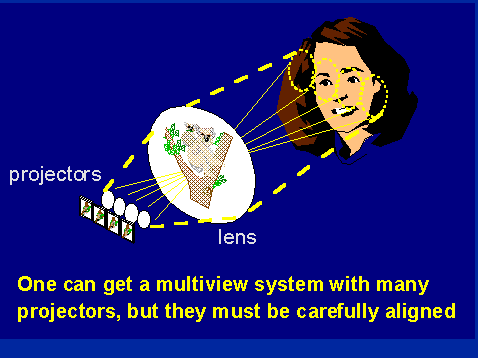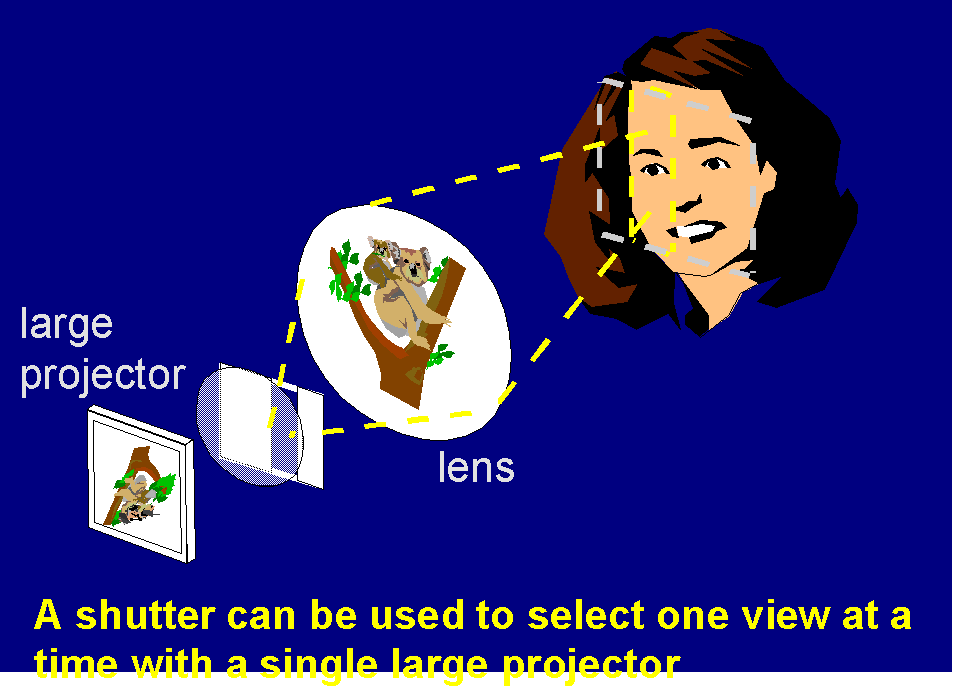| © CMG Lee • Dec2003 | |||||||||||||||||||||||||||||||||||||||||||
| Home | Basic 3D | Projection | Holographic | Optical addressing | Flat panel | Survey | Accommodation | Autostereo | Perspective | Principles | Simulation | Cam Display | References | ||||||||||||||||||||||||||||||
|---|---|---|---|---|---|---|---|---|---|---|---|---|---|---|---|---|---|---|---|---|---|---|---|---|---|---|---|---|---|---|---|---|---|---|---|---|---|---|---|---|---|---|---|
The problem with the basic concept is that it requires a liquid crystal
display with a high frame rate. While this has been shown to be possible,
it isnít easy! However it is possible to get TV projectors with high frame
rates, so this is what we are using now.
| Normally a TV projector is shone at a white screen so that everyone can see the picture. But one can restrict the field of view of a TV projector by shining it at a lens. The lens forms an image of the projector on one eye of the observer, so while the projected image still forms on the lens, it is only visible to that eye. Other projectors can be added beside the first to project views to other positions, but the projectors have to be aligned with horrible accuracy. |  |
| Instead we use a large projector, and place
a slit in front of it. A large projector covered by a slit behaves like
a small projector, i.e. it shines a picture onto the lens so as to be visible
to only one eye. But if we now move the slit from side to side we can make
the combination act like any of the other projectors.
|
 |
| Copyright CMG Lee & ARL Travis, Photonics and Sensors Group, Cambridge University Engineering Department |